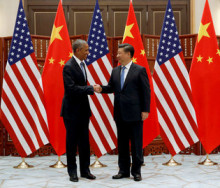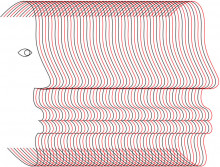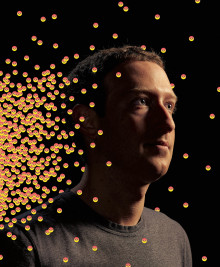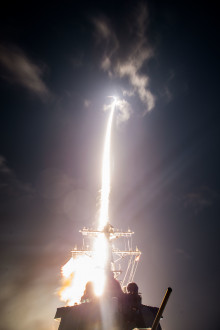Written by George GaldorisiPosted in Blog,This WeekJuly 17, 2017

Many of us “of a certain age” recall school as a journey of memorization. Whether it was the table of elements, mathematical formulas, or the dates of historic events, paraphrasing the Nike ad, we “just did it.”
That has changed dramatically and from their earliest days of schooling, today’s kids figure they can just “Google it,” to uncover literally anything they want to know. Can we now just give oer brains a rest? Not so fast.
I was intrigued by an article in the New York Times entitled “You Still Need Your Brain.” Here is part of what it said:
Google is good at finding information, but the brain beats it in two essential ways. Champions of Google underestimate how much the meaning of words and sentences changes with context. Consider vocabulary. Every teacher knows that a sixth grader, armed with a thesaurus, will often submit a paper studded with words used in not-quite-correct ways, like the student who looked up “meticulous,” saw it meant “very careful,” and wrote “I was meticulous when I fell off the cliff.”
With the right knowledge in memory, your brain deftly puts words in context. Consider “Trisha spilled her coffee.” When followed by the sentence “Dan jumped up to get a rag,” the brain instantly highlights one aspect of the meaning of “spill” — spills make a mess. Had the second sentence been “Dan jumped up to get her more,” you would have thought instead of the fact that “spill” means Trisha had less of something. Still another aspect of meaning would come to mind had you read, “Dan jumped up, howling in pain.”
Read the full article here.

Few topics are more timely than the relationship between the United States and China and that relationship is likely to dominate geopolitics throughout the 21st Century.
Perhaps because it is “topical,” a sea of commentators hold forth with theories about this relationship and there is often more heat than light on this subject.
That is why I found Thomas Christensen’s review of “Easterniation” so fascinating: it put the power balance between not just between the United States and China, but west and east into refreshing perspective. Here is part of what he had to say:
“Easternization” navigates the recent migration of economic, military and political power from the Western Hemisphere to the Eastern. Rachman repeatedly returns to that migration’s main engine — the rise of China — but his thesis is broader. He considers the rise of Asia as a whole, including the growing clout of India and the continuing importance of Japan, a nation that is not currently rising but remains wealthy, technologically sophisticated and economically linked to all continents. Rachman also explores the decreasing ability of Americans and Europeans to shape to their liking outcomes around the world. Relentlessly fair, he resists blaming Asia’s successes for Western problems and recognizes the West’s self-inflicted wounds.
Rachman’s wisdom about global history precludes cartoonish characterizations of “East” versus “West.” Western nations spent more blood and treasure fighting one another, especially in two massive world wars, than they did colluding to dominate others. Similarly, mistrust among Asian states today outstrips mistrust among them and the United States or Europe. Nor do political ideas provide a clear border between East and West. Europe has had more than its share of authoritarian regimes, so it is a stretch to consider the recent rise of illiberal nationalism in Europe as somehow a move “eastward.” Mainland Chinese propagandists rail against the “Western values” of multiparty democracy, a free press and independent courts, but some of the nation’s largest and most successful Asian neighbors — South Korea, Japan, Taiwan, Indonesia and India — are no less Eastern for enjoying all of those institutions. No one, including Rachman, really knows how to categorize Russia. Moscow has tried with limited success to cobble together a Eurasian union with former Soviet republics in Central Asia, but it sees itself as the European part of such a union. Russia’s recent diplomatic lean toward China has more to do with energy markets and the two authoritarian regimes’ shared aversion to American support for color revolutions and regime change than it does with either realpolitik alliance formation or Sino-Russian cultural affinity.
You can read the entire article here
Written by George GaldorisiPosted in Blog,This WeekJuly 3, 2017

Mindfulness and mindfulness meditation have been around for a while now, with more and more practitioners finding value in living in the moment, not dwelling on the past or worrying about the future. As one convert put it, “I don’t want to get to the end of my life and find out I didn’t show up for it. The mindfulness movement is growing, both in our personal lives as well as in the workplace.
Some wonder why mindfulness hasn’t caught fire more rapidly. I wondered too, before I read an interesting piece in the New York Times entitled, “We Aren’t Built to Live in the Moment.” The writers lay out a good case for why we don’t embrace mindfulness more enthusiastically, and it goes directly to what makes us human. Here’s part of what they say:
What best distinguishes our species is an ability that scientists are just beginning to appreciate: We contemplate the future. Our singular foresight created civilization and sustains society. It usually lifts our spirits, but it’s also the source of most depression and anxiety, whether we’re evaluating our own lives or worrying about the nation. Other animals have springtime rituals for educating the young, but only we subject them to “commencement” speeches grandly informing them that today is the first day of the rest of their lives.
A more apt name for our species would be Homo prospectus, because we thrive by considering our prospects. The power of prospection is what makes us wise. Looking into the future, consciously and unconsciously, is a central function of our large brain, as psychologists and neuroscientists have discovered — rather belatedly, because for the past century most researchers have assumed that we’re prisoners of the past and the present.
You can read this interesting article here.

Everyone agrees innovation is good…saying it’s not is like arguing against motherhood and apple pie. But what is innovation? How do you know if you “have it?” If you want more, how do you get it?
I always wondered about those questions, until John Michaelson’s article in the Wall Street Journal helped answer those questions. His thesis – that the financial crisis opened the economy to new forms of growth which are about to start pouring down – is compelling.
To no one’s surprise, much of it has to do with technology. Here is part of what he says:
Each decade for the past 60 years, we have seen a thousand-fold increase in world-wide processing power, bandwidth and storage. At the same time, costs have fallen by a factor of 10,000. Advances in these platforms, in themselves, do not produce innovation. But they facilitate the development and deployment of entirely new applications that take advantage of these advances. Amazing new applications are almost never predictable. They come from human creativity. That is one reason they almost never come from incumbent companies. But once barriers to innovation are lowered, new applications follow.
With that as a teaser, you can read the full article here.

Facebook is everywhere. It has over a two billion users and is growing bigger and more powerful every day. Mark Zuckerberg is a multi-billionaire who is using social media to help him figure out how to give away his money.
The company, which Zuckerberg co-founded in his Harvard dorm room 13 years ago, has become the largest and most influential entity in the news business, commanding an audience greater than that of any American or European television news network, any newspaper or magazine in the Western world and any online news outlet. It is also the most powerful mobilizing force in politics, and it is fast replacing television as the most consequential entertainment medium. Just five years after its initial public offering, Facebook is one of the 10 highest market-capitalized public companies in the world.
None of this is “bad,” but Zuckerberg now acknowledges the dangerous side of the social revolution he helped start. But is the most powerful tool for connection in human history capable of adapting to the world it created?
Want more? You can read this entire article here.
Written by George GaldorisiPosted in Blog,This WeekJune 26, 2017

We all likely belong to one or more institutions. Some belong to many. I’d always wondered why I “stuck” with and to some institutions, while others faded out.
I wondered, that is, until I read David Brooks piece called, “How to Leave a Mark on People.” Here is part of what he said:
Some organizations are thick, and some are thin. Some leave a mark on you, and some you pass through with scarcely a memory. Which raises two questions: What makes an institution thick? If you were setting out consciously to create a thick institution, what features would it include?
A thick institution is not one that people use instrumentally, to get a degree or to earn a salary. A thick institution becomes part of a person’s identity and engages the whole person: head, hands, heart and soul. So thick institutions have a physical location, often cramped, where members meet face to face on a regular basis, like a dinner table or a packed gym or assembly hall.
Thin institutions tend to see themselves horizontally. People are members for mutual benefit. Thick organizations often see themselves on a vertical axis. People are members so they can collectively serve the same higher good.
In the former, there’s an ever-present utilitarian calculus — Is this working for me? Am I getting more out than I’m putting in? — that creates a distance between people and the organization. In the latter, there’s an intimacy and identity borne out of common love. Think of a bunch of teachers watching a student shine onstage or a bunch of engineers adoring the same elegant solution.
What about your institutions?
Want more? Read the full article here.

I recently participated in a military-industry professional conference focused on future threats to national security. As part of that event, I was asked to be on a panel that explored how “life imitates art” and how the military and industry can (and do!) mine fiction to explore how warfighting will evolve in the future.
Fellow panelists included Mr. Peter Singer and Lieutenant Colonel Patrick Kirchner. Our goal was to help the conference delegates think outside the box.
Mr. Peter Singer is the author of many books about the military and technology (for example, Wired for War), and more recently, with August Cole, wrote the enormously popular novel Ghost Fleet.
Lieutenant Colonel Patrick Kirchner works for the Marine Corps Warfighting Lab in Quantico, Virginia. The Marine Corps Warfighting Lab sponsors a Science Fiction Writing Contest and publishes these works in a compendium. Why – to stimulate military men and women to have a view of the future they won’t get anywhere else.
Life DOES imitate art, and today we are using it to help ensure our warfighters – and those who support them – are never in a fair fight – but one they will always win.

Earlier this month, we posted a blog about the only existential threat to the United States – ballistic missiles armed with weapons of mass destruction. Few national security issues have dominated the headlines as much as the threat of North Korean ballistic missiles armed with weapons of mass destruction.
Americans have the right to ask – what are we doing to address that threat? Few know of the responsibility for defense against these weapons rests with the United States Missile Defense Agency. The Missile Defense Agency’s (MDA) mission is to develop, test, and field an integrated, layered, ballistic missile defense system (BMDS) to defend the United States, its deployed forces, allies, and friends against all ranges of enemy ballistic missiles in all phases of flight.
Recently, the professional journal, U.S. Naval Institute Proceedings, posted an excellent article with an interview with MDA’s leader, Vice Admiral James Syring. Here is part of what he said:
“We must assume that North Korea can reach us with a ballistic missile,” and must do everything possible to meet that threat.”
Ballistic missile defense (BMD) remains one of the most important missions for the United States’ military – and especially for the U.S. Navy – and it is one that is growing in importance – with rouge nations such as North Korea and Iran possessing ballistic missiles armed with weapons of mass destruction.
You can read the entire U.S. Naval Institute Proceedings article here.
Written by George GaldorisiPosted in Blog,This WeekJune 21, 2017

Today is the day. The summer solstice. Most of us are at least vaguely familiar with this event, but that’s where it ends. So here is a bit more granularity.
At the summer solstice, the Earth reaches the point in its orbit where the northern hemisphere is most tilted toward the sun, which puts the latter higher in the sky at noon than at any other time of the year. This is also the day of the year with the longest daylight period and the shortest night. In prehistoric times, the summer solstice was of great importance to aboriginal peoples. The snow had disappeared, food was easier to find, and crops already planted would soon be harvested in months to come. From then on, however, the days would begin to shorten, indicating the inevitable return of the cold season.
Written by George GaldorisiPosted in Blog,Writing TipsJune 18, 2017

For those of us who write, life is good – or even great – when you have a good editor. Editors are the unsung heroes who make our writing sing.
That’s why it seems a bit unfair that editors remain behind the scenes, toiling in virtual obscurity as they do their vital work.
Occasionally, and editor becomes well-known, largely because he or she has shepherded a writer along and helped that writer achieve fame or even fortune.
Harold Evans is one of those editors and that’s why I latched on to his book: DO I MAKE MYSELF CLEAR? Why Writing Well Matters.
Here is how Jim Holt’s book review of Evans book begins:
Have you heard of Harold Evans? Sir Harold Evans? Of course you have. He is one of the greatest and most garlanded editors alive. Now in his late 80s, Evans emerged from a working-class Welsh family in the provincial north of England to make his reputation as an ambitious young newspaperman. From 1967 to 1981 he was helmsman of The Sunday Times of London, which he turned into a powerhouse of investigative journalism. Leaving The Times after he clashed with its officious new purchaser, Rupert Murdoch, Evans soon moved to the United States. By the 1990s he had become head of Random House, where he edited the books of eminences like Norman Mailer and Henry Kissinger. Subsequently he himself wrote several popular books on American history. He is married to Tina Brown, the erstwhile editor of Vanity Fair and The New Yorker. Harry and Tina are Manhattan’s ultimate editorial “power couple.” One imagines that, after the last guest has left one of their glittering Sutton Place soirees, their pillow talk abounds in terms like “stet,” “transpose” and “delete.”
With that as a teaser, you can read the full review here.











